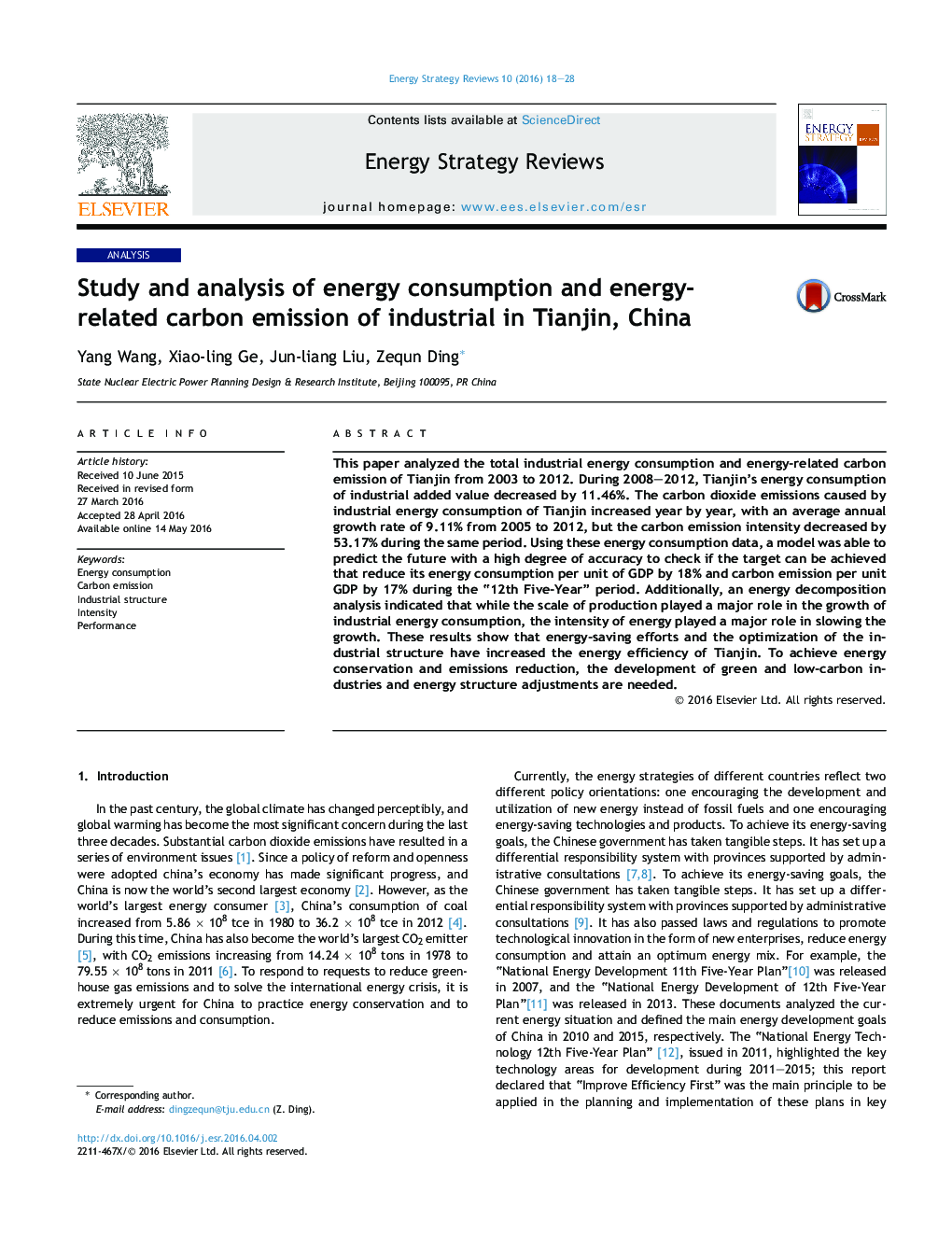| Article ID | Journal | Published Year | Pages | File Type |
|---|---|---|---|---|
| 1029773 | Energy Strategy Reviews | 2016 | 11 Pages |
•Industrial energy consumption and carbon dioxide emissions of Tianjin were analysis by LMDI.•Extraction energy data with logistic and GM model to model industrial energy station.•The energy conservation and emission reduction work in Tianjin from 2005 to 2012 achieved a certain effect.•A model was used to check if the target can be achieved during the “12th Five-Year”.
This paper analyzed the total industrial energy consumption and energy-related carbon emission of Tianjin from 2003 to 2012. During 2008–2012, Tianjin's energy consumption of industrial added value decreased by 11.46%. The carbon dioxide emissions caused by industrial energy consumption of Tianjin increased year by year, with an average annual growth rate of 9.11% from 2005 to 2012, but the carbon emission intensity decreased by 53.17% during the same period. Using these energy consumption data, a model was able to predict the future with a high degree of accuracy to check if the target can be achieved that reduce its energy consumption per unit of GDP by 18% and carbon emission per unit GDP by 17% during the “12th Five-Year” period. Additionally, an energy decomposition analysis indicated that while the scale of production played a major role in the growth of industrial energy consumption, the intensity of energy played a major role in slowing the growth. These results show that energy-saving efforts and the optimization of the industrial structure have increased the energy efficiency of Tianjin. To achieve energy conservation and emissions reduction, the development of green and low-carbon industries and energy structure adjustments are needed.
